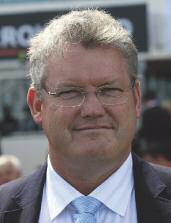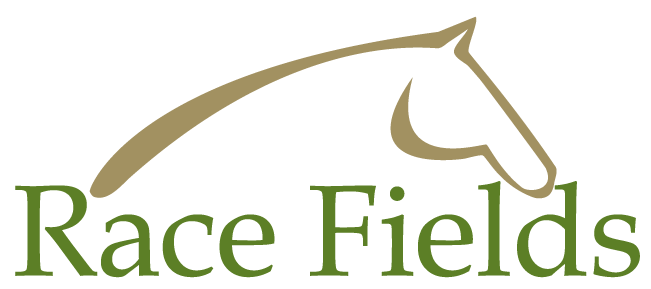Caroline Searcy, of Thoroughbred Breeders NSW, recently asked four of Australia’s leading buyers/ trainers Anthony Cummings and Gerald Ryan; and bloodstock agents James Bester and James Harron, about what matters to them when assessing physical features of yearlings for sale.
What is the most important factor in the conformation of a yearling you buy ? Do you assess parts of the horse – i.e. length of hip, etc or do you take an overall picture of the horse in your mind’s eye?
 |
| Anthony Cummings |
ANTHONY CUMMINGS: Balance - front to back, top to bottom.
GERALD RYAN: I take an overall picture but they have to have athleticism.
JAMES BESTER: Overall athleticism, balance, quality and action first, then come the “parts” - pelvic length commonly but incorrectly dubbed “hip”) is vital in my scheme of assessment, so is forearm/cannon (and tibia/cannon) ratio. I like good head/eye/nostril/jowl, too, as well as good rein/shoulder/barrel/hindquarter and a relatively straight hind leg.
JAMES HARRON: I like well balanced, physically mature horses. I would never buy a horse without good pelvic length (hip).
What faults can you live with and which ones do you refuse to accept (i.e. slack pasterns, long neck with potential wind problems, short neck, not enough length of rein, turned in/out, back at the knee/offset, etc)?
ANTHONY CUMMINGS: Different for different pedigrees.
GERALD RYAN: I can live with offset knees or toed-in providing they hit the ground properly. I will not accept a horse close at the hocks (cow hocked).
JAMES BESTER: Can live with most so-called faults, especially if trademarks of successful sires and male lines, like Danehill-line calf (back) knees or Sir Tristram/Zabeel-line offset knees and less-than-perfect hocks, etc, provided the horse has athleticism, balance, quality and action.
JAMES HARRON: I can live with small conformational issues and try to focus on the things I love about the horse. I then take guidance from one or two particular vets I have faith in who may be able to determine if an issue will get worse. One of my biggest no-nos is long, slack pasterns.
Looking at more serious faults such as OCDs or other issues that come up in X-rays, what grading is the absolute minimum you will accept in a yearling ? Are you flexible with that if it is a great type other than having that fault?
.bmp) |
| Gerald Ryan |
ANTHONY CUMMINGS: If I am buying for myself, I do not look at X-rays. they are a poor guide to a fast horse. We have different experiences with the various issues that can present and we make our assessments based on those experiences.
GERALD RYAN: OCDs in stifles and front joints I won’t accept. I will accept OCDs in hocks as long as they can be fixed surgically.
JAMES BESTER: I take veterinary advice on those and will accept “low risk” or even “moderate risk with time” (though not in a prospective early two-year-old) but not “high risk” unless it is a horse I love and is going for a ridiculously low price.
JAMES HARRON: I work with a couple of very good vets who guide me on these things. I take all the relevant information and discuss it with my clients and we come to a decision together on whether or not to bid on a horse.
How much leeway do you give for horses naturally correcting their faults with time or through surgery?
ANTHONY CUMMINGS: Time fixes most things.
GERALD RYAN: I am lenient on naturally correcting faults, depending on the maturity of the horse. Surgical correction depends on the fault and where it is.
JAMES BESTER: If on vet’s advice I believe time or surgery will do the trick, I’ll make allowance within reason unless my client is after an early two-year-old.
JAMES HARRON: It really depends on the individual and whether or not it’s an early type. It is hard to be too forgiving as there are a lot of yearlings on the market and it’s about reducing the risk for your client and eliminating factors which may make that horse unsuccessful - taking punts with something which may get better isn’t something I do or would ever do.
Have you had success with horses which have failed X-rays? Any particular names?
.bmp) |
| James Bester |
ANTHONY CUMMINGS: Yes and no.
GERALD RYAN: Yes I have but I would prefer not to name them. Clangalang I got later and to my knowledge he was never X-rayed as a yearling but I am sure he would not have passed.
JAMES BESTER: Yes, I bought Upon This Rock for Laurie Macri for half price after both Coolmore’s and Bart Cummings’ vets had failed her as had my own vet. Because I just loved her, Laurie agreed to take the risk and now she’s a very, very valuable stakes winning broodmare prospect who so far has not had a day’s unsoundness.
JAMES HARRON: I have never bought a horse that was an outright fail but I have heard plenty of stories where people have and the horses have gone on to be successful.
As this is for a breeders’ publication, what’s the thing you notice most about a good vendor at a yearling sale?
ANTHONY CUMMINGS: A lack of friends amongst the bidders!
GERALD RYAN: Presentation and horses looking well and parading properly.
JAMES BESTER: One who doesn’t try to “sell” me their horse and allows me to view at a distance and in silence! One whose handlers know how to pose the horse and walk it. One whose horses are not too fat !
JAMES HARRON: I’m a big believer in letting the horses do the talking! Buyers will come and ask if they want to know something. It is really important to allow people the time to look uninterrupted at the horse and also very important for the strapper to be trained in showing yearlings properly. It makes a huge difference especially when you are looking at hundreds of horses and it’s the end of a long day. Essentially, the good vendors have their horses turned out to a very high standard regardless of the calibre of the sale they are in and this gives buyers confidence their horses have been well cared for since the day they were born.
Should the system be changed whereby vendors lodge a single set of X-rays of each horse in a repository and vets acting for potential buyers charge their clients for assessing them, sometimes making multiple charges if an opinion is requested by more than one client?
 |
| James Harron |
ANTHONY CUMMINGS: Yes, X-rays need to be freely available to all to satisfy all issues. Everyone is then on the same level as a purchaser.
GERALD RYAN: No, I don’t think it should change. For the sake of $180 it is best to get your own vet in whom you have faith to check the X-rays for you. Opinions differ on what is or is not acceptable.
JAMES BESTER: Probably !
JAMES HARRON: Yes.
Do you think it is worthwhile to view yearlings pre-sale at their home studs, from weanlings or even as foals at foot?
ANTHONY CUMMINGS: To accurately compare horses they need to be seen under the same conditions in a similar time frame. The saleyard provides that best.
GERALD RYAN: Yes, I do. In an ideal world I’d love to be looking at them every three months leading up to the sales.
JAMES BESTER: Very definitely - I like to see them earlyish in a prep if I can when they are as relaxed as possible in familiar surroundings.Then at the sale I can see if they have gone forward or back with work and how they adapt to the stress of a sale.
JAMES HARRON: Yes I do but if I was not able to do it, it would not bother me. I like to grade them all beside each other at the sales. I’m also mindful that vendors like to have their horses turned out to show their full potential. Where it becomes relevant to me and one of the main reasons for doing it is that it sometimes takes a lot of work to find buyers for the more expensive horses, so by seeing them perhaps a month before the sale it puts you in the box seat.
Is it harder buying at the top end where there is more competition or at the bottom end where you have to sift through more numbers?
ANTHONY CUMMINGS: A select sale is a start. It makes it easier to find a good horse and gives confidence to the intending purchaser. That usually means they cost a little more, but not always.
GERALD RYAN: The hardest bracket is the middle one as it attracts a lot of competition as there are a lot of buyers looking for that good one at around $250,000 to $300,000. The top end - if you have the clients - is easier as a lot of the competition is eliminated. The bottom end is very selective and becomes type only and you get a lot of buyers not looking so a nice horse can be missed. My most successful purchases have come from the middle to lower end, around $80,000 to $200,000.
JAMES BESTER: Both are hard - all buying is hard! At the top, scarcity, ego and bravado can distort prices, at the bottom there is a wider range of buyers and more competition numerically.
JAMES HARRON: It’s all hard - you just have to do your best, do your homework and back yourself.
Do you look at every horse in a sale or pick out some on other criteria to limit how many you have to see?
ANTHONY CUMMINGS: At most sales I try to see all the horses.
GERALD RYAN: I try to look at the majority of horses at sales and like to buy from the same vendors and vendors who seem to sell a lot of winners, those whose horses I have had luck with in the past.
JAMES BESTER: Within reason, I look at every horse unless I have barred the progeny of a sire or a stud!
JAMES HARRON: I look at every single horse in every major yearling sale regardless of pedigree or stallion so we have it all covered. I think it also trains your eye better to appreciate the good ones.
In the Summer 2012/13 issue of Update, Caroline Searcy will question these yearling buyers on the pedigree features they look for at the sales.
 InglisDigitalAUS
InglisDigitalAUS InglisDigitalUSA
InglisDigitalUSA







